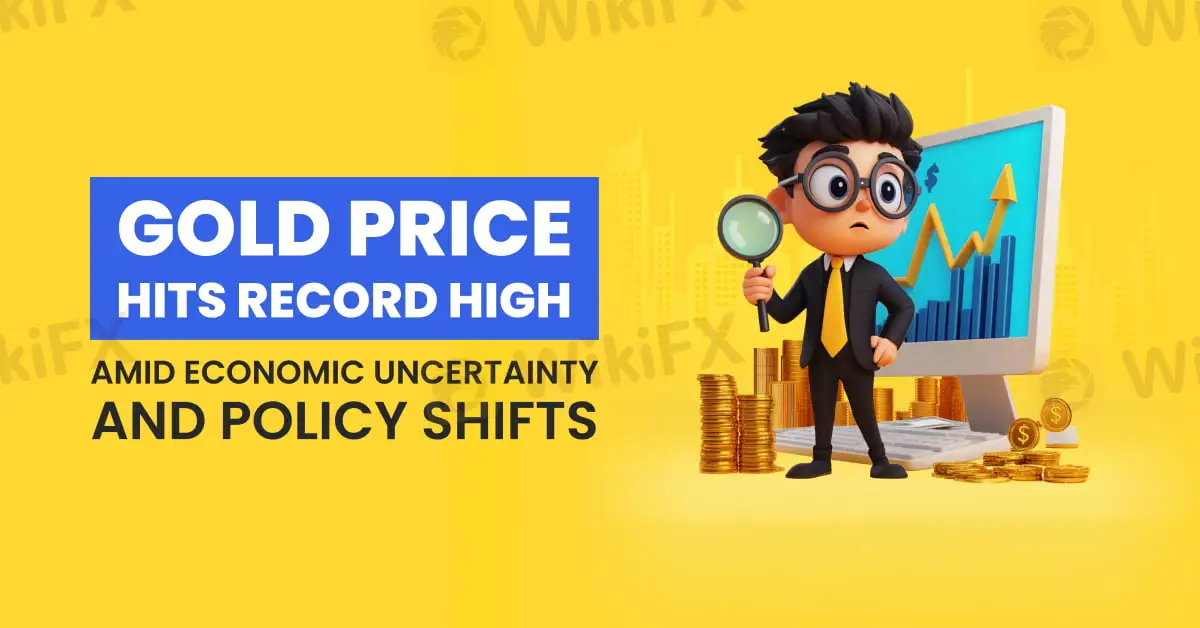Gold Price Hits Record High Amid Economic Uncertainty and Policy Shifts
Abstract:Gold prices soared to an all-time high, nearing the key $3,000 per ounce threshold, as investors responded to heightened tariff uncertainty and growing expectations of monetary policy easing by the U.S. Federal Reserve.

Gold prices soared to an all-time high, nearing the key $3,000 per ounce threshold, as investors responded to heightened tariff uncertainty and growing expectations of monetary policy easing by the U.S. Federal Reserve. Spot gold reached approximately $2,994 per ounce, marking a historic peak driven by market anxieties and shifting economic policies.

Industry analysts anticipate further gains, with forecasts placing gold prices in the range of $3,000 to $3,200 per ounce over the course of the year. The ongoing global economic landscape, particularly the unpredictability of U.S. trade policies, has strengthened golds appeal as a safe-haven asset. The volatility surrounding trade negotiations and tariff adjustments has led investors to hedge their positions, favouring the precious metal in times of geopolitical and financial instability.
The Federal Reserves upcoming monetary policy meeting, scheduled for next Wednesday, remains a key focal point for markets. The central bank is widely expected to maintain its benchmark interest rate within the 4.25% to 4.50% range. However, policymakers face challenges in assessing the broader economic impact of ongoing trade disputes. Analysts suggest that the uncertainty surrounding tariff changes has made economic forecasting more complex, requiring the Fed to rely on evolving economic data to shape its next steps. The central bank has already reduced interest rates by 100 basis points since September but halted its easing cycle in January. Market expectations indicate a potential resumption of rate cuts as early as June.
Recent economic data has presented a mixed picture. The latest figures from the U.S. Labor Department revealed that producer prices remained unchanged in February, while the consumer price index recorded a 0.2% increase, following a more substantial 0.5% rise in January. These developments are being closely monitored by investors assessing inflation trends and the potential direction of monetary policy.
Beyond macroeconomic factors, strong demand from exchange-traded funds (ETFs) and continued central bank purchases have further propelled gold prices upward. Analysts highlight that, in addition to geopolitical tensions, the persistent uncertainty generated by shifting trade policies has reinforced investor appetite for the precious metal. As market conditions evolve, gold remains a key asset for those seeking stability amid financial turbulence.
With multiple forces at play, including global trade dynamics, Federal Reserve policy shifts, and inflationary pressures, golds trajectory remains a critical point of interest for investors worldwide. As prices approach the significant $3,000 milestone, market participants will continue to monitor economic indicators and central bank actions to gauge the future direction of the gold market.

Read more

TradingPRO: A Closer Look at Its Licences
In an industry where safety and transparency are essential, the regulatory status of online brokers has never been more important. For traders seeking to protect their capital, ensuring that a platform operates under recognised and stringent oversight can make all the difference. Keep reading to learn more about TradingPRO and its licenses.

Oil Price Breakout Incoming? Investors Should Stay Alert
Oil prices are hovering around a critical level, with potential yet to be fully unleashed. Investors must prepare for sudden changes.

New SEBI Regulations on Intraday Trading
The Securities and Exchange Board of India (SEBI) has implemented revised regulations on Intraday trading, with effect from November 20, 2024. These regulations are meant to lessen risks and prevent speculative trading practices.

A Guide to Intraday Forex Trading You Can't Miss Out
Intraday trading where everything happens in a day fascinates millions around India and worldwide. The drama, the hype, and the ups and downs resulting from those are nothing short of an adventure. Read this guide to ace the forex intraday trading game.
WikiFX Broker
Latest News
ASIC Urges Financial Licensees to Fix Register Errors Before 2026 Deadline
eToro Review 2025: Top Trading Opportunities or Hidden Risks?
How much money will you earn by investing in Vantage Broker?
IronFX vs Exness Review 2025: Comprehensive Broker Comparison
Fraudsters Are Targeting Interactive Brokers' Users with Lookalike Emails
Everything you need to know about ADSS
SkyLine Guide 2025 Malaysia: 100 Esteemed Judges Successfully Assembled
Vantage Markets Review 2025: Trusted Forex and CFD Trading Since 2009
Top Tips to Choose the Best Forex Broker in 2025
SEBI Notifies New F&O Rules for Investors - New Derivative Trading Limits & More Amendments
Rate Calc
